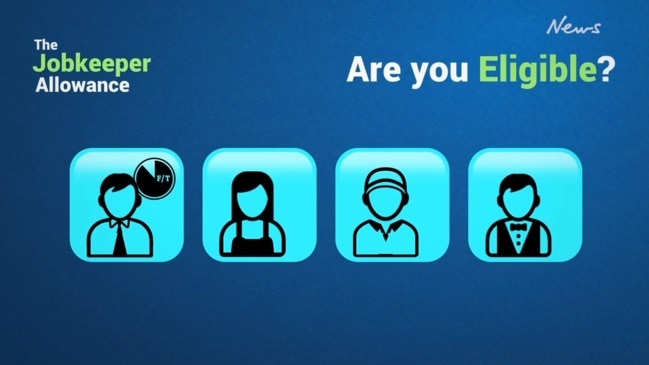JobKeeper: When you can get your hands on the $1500-a-fortnight payment
The government’s $130 billion wage subsidy scheme has been approved and it could spell massive changes to your normal role.

The $1500-a-fortnight JobKeeper package announced by the Federal Government has now been rushed through parliament as the nation scrambles to soften the economic blow caused by COVID-19.
The wage subsidy is designed to keep Aussies in jobs as the pandemic plays out, and six million workers are expected to benefit from the scheme in the largest stimulus package ever handed down in the country’s history.
RELATED: $130b wages package to pass today
RELATED: ATO reveals new working from home rules
But while it has been introduced in an effort to save jobs, it could also lead to significant changes to employees’ regular roles.
HOW IT WORKS
The money won’t be paid to eligible workers directly – instead, employers will pay their staff and be reimbursed by the government.
The first payments by the ATO will be received by employers in the first week of May, but it will be backdated to when the scheme was first announced in late March, which means people will initially receive a lump sum of one month’s worth of payment.
Under the scheme, workers who have their hours cut will be able to request time to work a second job.
Companies will be able to cut employees’ hours so their income matches the $1500 per fortnight JobKeeper payment, as long as there is not enough work available for them in their normal role.

AM I ELIGIBLE?
There are a number of boxes to tick before being eligible to receive the payments.
You must be employed currently or had been on March 1 this year, including those who were let go since and rehired.
The eligibility extends from full-time workers to part-time and casuals but you must have been employed for at least 12 months. And the payments are only available to Australian citizens or holders of select work visas.
You can only get the JobKeeper payments from one employer and you can’t receive the JobSeeker payments on top of this.
However, if you have already put in an application for a JobSeeker allowance, don’t stress. The Australian Taxation Office will consider both applications and work out which category you fall under.
ANYTHING ELSE?
Businesses will be allowed to move workers into different roles or physical locations to keep them in work – within reason – such as requesting sales staff swap to deliveries.
The Fair Work Commission will be able to review stand-down periods and employer changes to people’s work location or duties.
Workers can agree to change their days, while bosses could also ask staff to take annual leave, provided employees have two weeks left over.
Reasonable requests to take annual leave will not be able to be refused.
While unions pushed for changes to be made through the Fair Work Commission, the government will instead legislate temporary amendments to the Fair Work Act.
WORKERS MISS OUT
However, JobKeeper is not available to all workers.
Businesses with less than $1 billion in revenue will only be able to claim the subsidy – and pass it on to individual workers – if they experience a 30 per cent drop in sales, or a 50 per cent hit for firms with more than $1 billion in revenue.
It specifically excludes around 1.1 million casual workers who have not been working for the same employer for more than a year.
Freelancers will also miss out, along with many foreign workers.
Those who are not eligible for JobKeeper can still apply for the JobSeeker allowance, which is $400 less at $1100 a fortnight.
However, Professor Tom Smith, Head of Applied Finance at Macquarie Business School, described the package as “a lifeline for everyone”.
“That’s the one thing that will keep the economy going, and in many cases keep the business running,” he said.
“In those instances, where businesses can’t continue their operations, the JobKeeper subsidy keeps the employee connected to the employer, so when the business is able to start again, that employee is still on the payroll and ready to resume work and operate the business again.
“The upside is for hospitality workers. If you are in hospitality and only doing one shift a week part-time, you would only get around $200 per shift or $400 a fortnight, whereas the JobKeeper gives you $1500 per fortnight. It doesn’t discriminate. You will still get $1500 per fortnight regardless of the number of shifts you do per week.”
But he said one of the “downsides” was the fact that international students would not qualify for the payment, which was especially concerning given education is Australia’s third-largest export, worth around $35 billion a year.
“Overall it’s a really good scheme and it has a breadth of coverage. The government needs to be congratulated,” he said.
“All politicians contributed to this scheme with Labor making some constructive suggestions.”
– with wires
Originally published as JobKeeper: When you can get your hands on the $1500-a-fortnight payment




